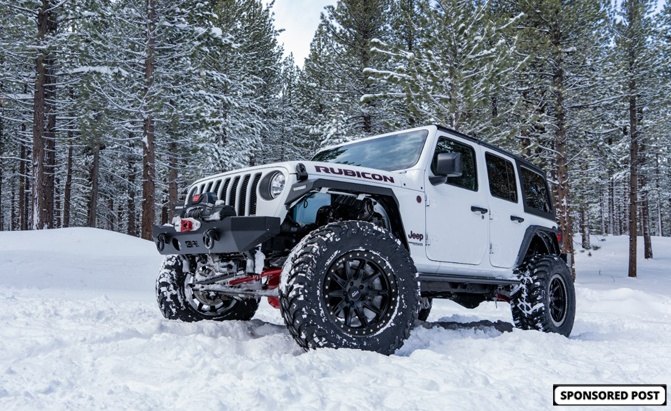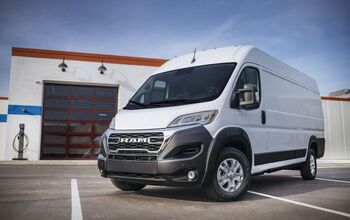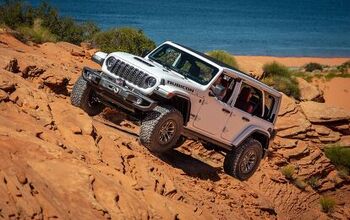Buying Winter Tires: What Canadians Need to Know
Traction, as we all know, can mean the difference between keeping all four tires on the road, and taking an unplanned detour off the pavement into a snow bank (or worse). Not to mention, adding winter tires can also lower your insurance premiums in Canada.
Whether your winter vehicle is a car, truck or SUV, a set of new winter tires can make all the difference, helping bring out its best driving performance, providing many kilometres of safety, security, and peace-of-mind. But there are many different factors to consider before purchasing a set, and navigating the plethora of winter tire options out there can be tricky for the uninitiated. (That’s no excuse for going without them, however.)
We’ve partnered with TDot Performance to put together a handy guide to selecting the best winter tires for your ride. A Canadian-owned and operated online auto parts retailer, TDot Performance is focus on providing Canadians with parts that might otherwise have to be purchased from the United States, saving them time and money — not to mention customs duties, brokerage fees, unfavourable exchange rates and other assorted headaches. That includes tires from big-name brands Canadians know and trust, like BFGoodrich and Michelin.
Winter Wheels
Mounting and dismounting tires from a single set of wheels is a chore, and one that can become expensive in short order. For that reason, many seasoned winter driving veterans keep an alternate set of “winter wheels” handy, so that when the seasons change, they can simply swap the wheels out, without the extra step of having to get everything mounted and balanced.
If you choose to go this route, make sure that you purchase wheels with the correct bolt pattern, offset and center bore for your vehicle. Large brakes like those found on many performance cars are also a concern; you’ll need wheels wide enough in diameter to leave adequate space for your vehicle’s brake calipers. Steel wheels are often favoured for winter driving for their ease of repair, although they tend to be heavier (and uglier) than alloy wheels — but again, the goal here is safety, not fashion.
Tire Sizing
This may sound obvious, but it’s an important step: once you have your wheels selected, you’ll need to make sure the new tires you’re shopping for will fit. Unfortunately, the standard way of expressing tire sizing can be confusing. For road tires, it most often begins with either a “P” for “Passenger” or “LT” for “Light Truck,” followed by the “section width” in millimetres, the height “aspect ratio” as a percentage, the letter “R” for “Radial” construction, and the diameter of the wheel, expressed in… inches. (Sorry, Canada.)
For example: if you see a tire with the alphanumeric code “P225/55R17” – it’s a Passenger tire with a section width of 225 mm, a height that is 55 percent of the section width, radial construction, and an inner diameter made to accommodate a 17-inch wheel.
Confused? Then we probably shouldn’t even mention flotation tire sizing – another standard, unique to off-road tires, that expresses sizing as the tire’s outer diameter, width, and wheel diameter, in that order, all in inches (e.g. 32×10.50R16).
Selecting the Right Tire
Finally, the most important part of any winter tire buyer’s guide: how to choose the best winter tires for your needs. Tires that exceed established winter performance requirements are denoted by a symbol on the sidewall showing a three-peak mountain with a snowflake. Generally, they fall between two extremes: ice tires and snow tires.
Ice tires tend to have close-set tread blocks with lots of incisions, and are made from compounds containing more silica, keeping them more flexible in frigid conditions, affording superior cold-weather traction. Tires like the well-known – and well-regarded – Michelin Ice-X Xi3 fit the mould.
Snow tires, conversely, tend to have farther-set tread blocks, allowing them to more effectively “scoop” their way through deep snow, similar to how off-road tires are designed to grab loose surfaces. Their compounds are generally firmer, giving them greater tread life at the expense of some cold-weather traction. Tires like the BFGoodrich Winter T/A KSI and the Uniroyal Tiger Paw Ice & Snow 3 fall closer to this end of the spectrum, although both BFGoodrich and Uniroyal have taken pains to ensure the tires’ respective compounds still have a decent mix of flexibility.
Which of these two extremes is more useful for you comes down to where you live, and the sort of conditions you anticipate driving in more often. Ice tires are generally aimed at those whose commutes favour city and highway driving – places where plowing is prompt, and constant traffic is more likely to melt the snow (so that it can later refreeze into a hazardous sheet of ice, naturally). Snow tires, meanwhile, are better suited to those who do most of their driving on lower-traffic roads or in more rural areas, where there’s a greater chance of snow piling up on the road — and remaining there until the plows and salt trucks finally make their way out.
And then there are high-performance winter tires – like the Michelin Alpin A4. This category is reserved for tires that sacrifice some amount of snow/ice grip in order to maintain superior dry road handling — a potential issue for winter tires — making them a sort of jack-of-all-trades. They tend to be most popular with sports car and muscle car owners who drive their performance vehicles year-round instead of letting them hibernate in a warm and toasty garage for the winter months.
In addition to those we’ve already mentioned, other top winter tire brands include Falken and Dick Cepek. But while each winter tire design is different, it’s hard to go wrong — especially if you’re coming from a set of generic, factory-installed all-season tires. Compared to those, any decent set of winter tires is going to provide far more safety, security and peace of mind when those crummy winter conditions inevitably hit.
If you’re ready to pull the trigger on some new tires for your winter ride, or just want to do more research on which sets might be right for you, the folks at TDotPerformance.ca can help. The company offers free shipping within Canada, a best price guarantee, 30-day no hassle returns, and a full warranty.
More by AutoGuide.com Staff





































Comments
Join the conversation